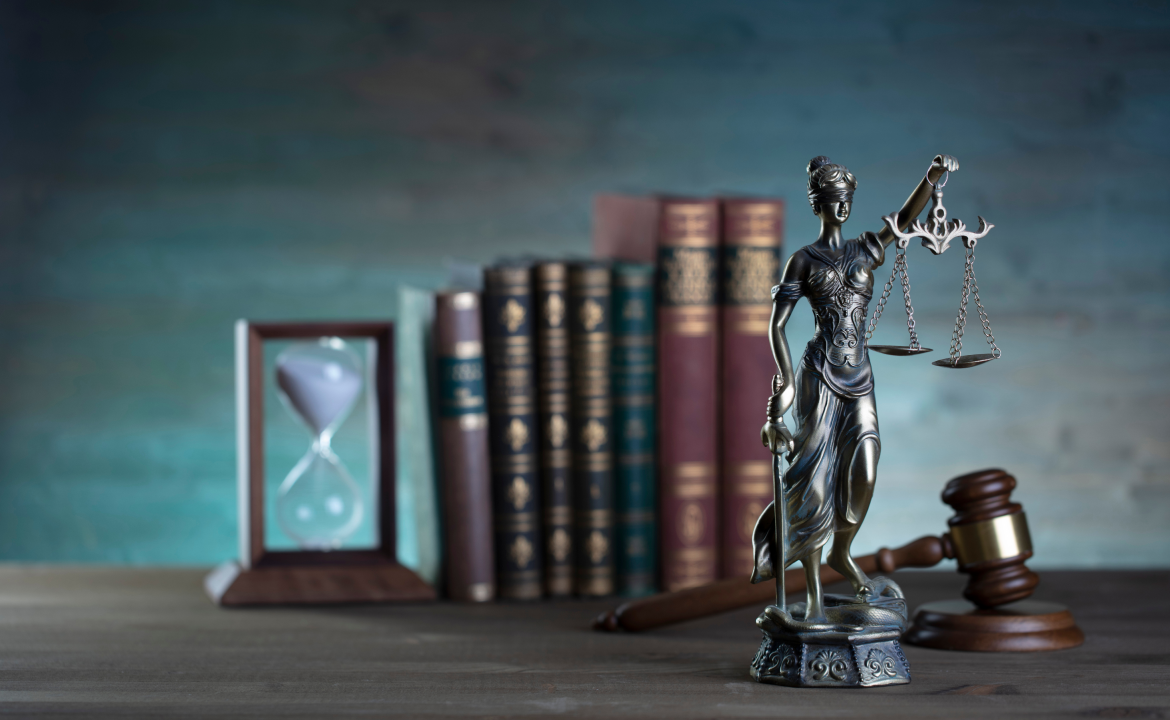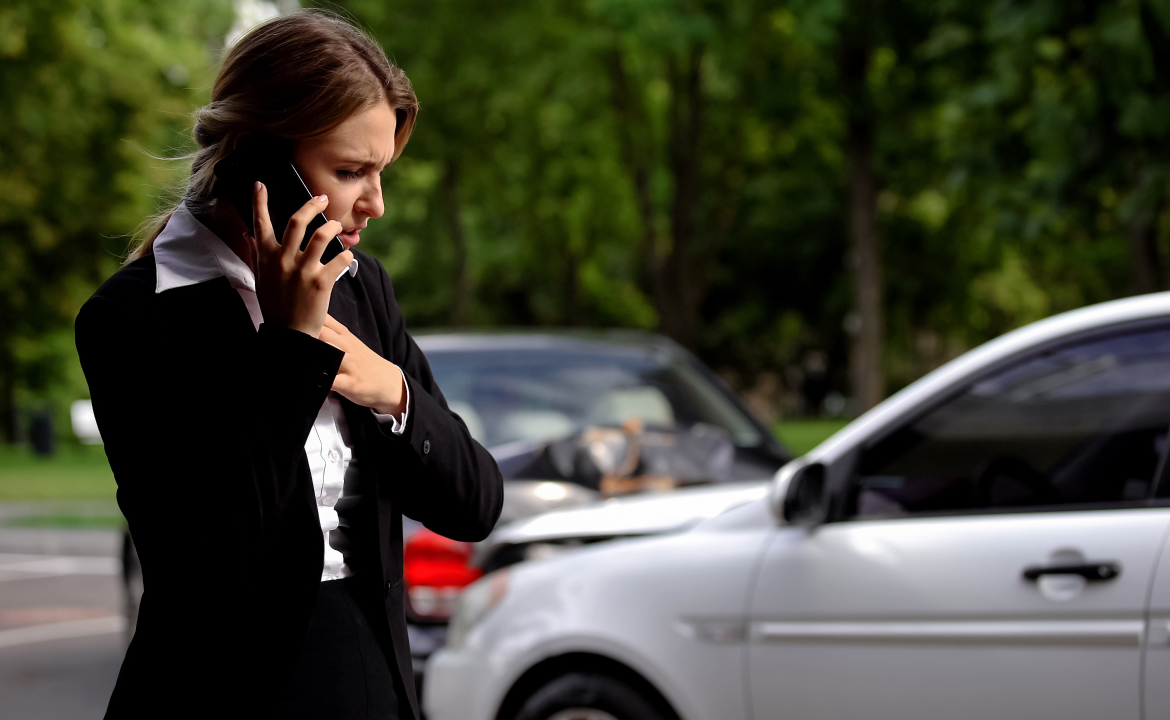The Roles, Risks, and Stages of Personal Injury Trials
This article takes a deep dive into the anatomy of the personal injury trial. However, before going into the details and mechanics of what happens at a personal injury trial, we begin with a realistic look at the risks and costs of going to trial and the reasons why both plaintiff’s attorneys and defense litigators recommend settlement over going to trial.
Despite what you might think, a personal injury case rarely gets tried. This is true even if you retained a highly experienced personal injury lawyer with years of trial experience who has litigated personal injury claims to million-dollar verdicts.
Daunting Statistics
According to the American Bar Association (ABA), only a small percentage of personal injury cases make it to trial. More specifically, only 4% to 5% of personal injury lawsuits get tried – and about 50% of those who go to trial lose their case.
Why So Few Cases Make It To Trial?
Most personal injury cases settle before trial. This is because, in most instances, an experienced personal injury attorney knows how to evaluate their case’s trial value and can identify the statistical risks associated with taking the case to trial.
The truly talented trial attorneys are also experts in personal injury settlement negotiations.
The goal of the plaintiff’s attorney is to ensure their client’s right to full and fair compensation for their injuries. At the same time, personal injury cases are both unpredictable and expensive to litigate.
Each case is unique and has its own strengths and weaknesses. For example, proving liability against the at-fault party may be difficult in one case. In another case, proving liability will be simple, but the primary defendant is underinsured, making it difficult to recover the total cost of the plaintiff’s medical bills, lost wages, and general damages.
In most scenarios, the best course of action is to settle the case as soon as possible, without incurring additional costs.
With these settlement considerations in mind, let’s examine the personal injury trial, starting with identifying its key players.
The Key Players in A Personal Injury Trial
Several key players make up a personal injury trial. This article explains each player’s role within the context of the different phases of the personal injury trial.
Role of the Judge
The judge presides over all aspects of the trial. The judge manages the courtroom, maintains order, and presides over each phase of the trial.
Powers of the judge include:
- Ruling on all pretrial motions
- Managing the jury selection process
- Ruling on all objections made by counsel
- Ruling on all evidentiary matters, including which evidence is admitted or excluded
- Instructing the jury on the law
- Managing the overall flow of the proceedings
- Safeguarding the integrity of the jury
Role of the Court Clerk
Every courtroom is assigned an administrative clerk who usually sits to the immediate right of the judge in all official proceedings. The courtroom clerk provides essential administrative support for the judge.
Powers of the court clerk include:
- Manages the court’s judicial calendar
- Organizes and prepares the court’s case files
- Attends all court sessions.
- Records and manages all court minute orders
- Helps the court manage proceedings
- Manages the case management system
- Explains the rules of the court to attorneys
- Supports the judge in maintaining an organized flow in their courtroom
Role of the Lawyers
Plaintiff Lawyer
The role of the plaintiff’s lawyer is to zealously represent their client by presenting and proving the allegations of their case to the judge and jury by a preponderance of the evidence. It is customary for the plaintiff’s lawyer to be compensated for their work on a contingency basis.
Defense Lawyer
Defense counsel in personal injury cases represents the defendant and is almost always retained and paid for by the defendant’s insurance company.
The insurance company has a contractual obligation to its policyholder to defend and indemnify the insured if a plaintiff sues the insured for damages in a civil action.
Role of the Jury
The triers of fact
The jury’s role in personal injury trials is to determine the facts in the case, apply the law to those facts, as instructed by the judge, and reach a verdict.
The jury’s role is to determine whether the defendant was the factual cause of the plaintiff’s injuries and the amount of compensatory damages the plaintiff is entitled to recover from the defendant.
Role of the Court Reporter
Makes and keeps the official record of the proceedings
Court reporters play a critical role in personal injury trials. By law, the court reporter must transcribe an independent and unbiased record of what occurred at trial and produce a complete and accurate transcript of everything stated by the judge, attorneys, and witnesses once the trial is concluded.
If the personal injury case is appealed, the court reporter’s official transcript will serve as the basis for what transpired at the trial court in determining whether the trial court verdict should be affirmed or retried.
Role of Bailiff
Enforces law and order in the courtroom
Every courtroom is assigned a bailiff, usually a local law enforcement member, and is responsible for the following:
- Courtroom security
- Safety of all participants in the trial
- Maintains order in the courtroom
- Warns and removes disruptive persons from the courtroom
- Helps the court manage the jury’s movements, such as going on breaks and escorting them from and to the jury deliberation room
Phases of The Personal Injury Trial
Jury Selection – Voir Dire
Before a trial commences, a jury must be selected. A panel of potential jurors is summoned to the court’s general jury administrative office to register for active jury duty.
Once registered, a juror will become part of a jury panel. Panels usually are made up of about 25 to 50 potential jurors. The panel will include community members, from whom 12 plus alternates will sit as jurors on a case.
When a court is ready to begin a new trial, a panel of potential jurors is taken to a specific courtroom to participate in the jury selection process known as Voir Dire.
Opening Statements
A personal injury trial opening statement is the lawyer’s first opportunity to address the jury and present an account of what the lawyer believes the evidence will show.
An opening statement usually begins by identifying the parties to the case, providing an overview of the facts and evidence that will be presented to the jury, and outlining the significant issues in dispute.
The lawyer’s opening statement should be neutral, organized, and delivered with a neutral tone.
Rules Governing the Opening Statement
Presenting what the evidence will show…
The opening statement is not a time for argument but rather a time to present a factual organization of the evidence and what that evidence will show at the conclusion of the trial.
In the opening statement, lawyers must use neutral phrases to describe their case, such as “the evidence will show...”, but they may not argue what they will prove.
While the difference is subtle, the court and the opposing party will pay close attention to ensure the opening does not sound overly dramatic and adversarial.
Should that happen, you might hear the judge admonish the lawyer by saying in a stern voice:
[T]hat will be enough counsel, bring your tone down a bit, this is an opening statement, not your closing argument… you’ll get your chance to argue the case at the end of the trial…
The court’s admonishment to counsel is meant to put the lawyer and the jury on notice that what counsel says during the trial is not evidence.
Earning the Jury’s Trust
Setting a personal and respectful tone
While the line between opening statements and closing arguments may sometimes be fuzzy, an experienced trial lawyer can walk that line carefully and artfully.
The opening statement allows the attorneys to address the jury directly. It sets the tone for the trial and gives the jury a sense of what to expect as it progresses.
Counsel should outline the narrative of the case for the jury
At trial, witnesses and evidence are often presented out of order, making it more difficult for the jury to fully grasp the case. In the opening, the lawyer can earn the juror’s trust by sincerely offering them a concise, easy-to-understand chronology of events—a clear outline of what the evidence will show.
Including exhibits during the opening statement
The opening statement might include the lawyer using exhibits that the court pre-approved during its pretrial conference with the lawyers.
The use and purpose of exhibits shown to the jury in the opening statement are to assist the jury in understanding the organization and chronology of the case, and they are not allowed to prove the lawyer’s case nor to inflame the jury’s emotions.
Evidence In Personal Injury Cases
Types of evidence
Evidence can be in the form of lay witnesses or expert witness testimony, photographs, documents, drawings, recordings, official records, physical objects, or anything that will assist the jury, as the fact-finders, in determining what weight to give the evidence.
Common Forms of Personal Injury Evidence
- Receipts for Medical Expenses
- Medical Records Billing Records
- Loss of Income Records
- X-Rays And Reports
- Testimony of Plaintiff
- Testimony of Defendant
- Testimony of Percipient Witness
- Medical Expert Witness Testimony
- Expert Vocational Rehabilitation Testimony
- Expert Economist Testimony
- Before and After Photographs
- Expert Accident Reconstructionist Testimony
Rules of Evidence
The federal and state civil court systems have codified their own rules of evidence. The rules state what evidence is admissible and the type of evidentiary foundation that must precede its admission.
Two Most Common Rules of Evidence
There are hundreds of rules of evidence – far too many to describe here. However, there are two primary rules worth noting:
- Only Relevant Evidence Is Admissible: For evidence to be accepted by the court, it must be relevant, meaning it must tend to prove or disprove a material fact or issue in controversy.
- Hearsay Evidence Is Not Admissible: Unless the out-of-court statement fits within an established exception.
Example of: In-Camera Hearing
In a pharmaceutical product liability case, the defendant manufacturer used a secret, proprietary chemical process in developing its product, which it claims is a trade secret.
Suppose the judge rules in favor of nondisclosure of the manufacturer’s trade secret. The judge will then instruct the jury that a trade secret exists and that the public disclosure could cause irreparable harm to the owner of the intellectual property.
Examination of Witnesses
Once the plaintiff and defense counsel have made their opening statements, the next phase of the trial is the calling and examination of witnesses.
Since the plaintiff bears the burden of proof, they will examine their witnesses first.
Witness Testimony
Witness testimony is one of the most common forms of evidence. Whether the witness is an expert, percipient, or eyewitness, the witness, when called to testify, will be subject to direct and cross-examination.
Expert Witness Testimony
Opinion testimony
For example, the plaintiff may wish to have her orthopedic surgeon testify on the long-term medical effects of the injury and the specific course of medical treatment required to treat the plaintiff. This type of evidence is called expert opinion testimony, and only experts can testify as to their opinions.
Before the judge allows the expert to testify, the plaintiff’s counsel must establish a legal foundation for its admission into evidence. The foundation must show that the doctor is qualified by education and experience to offer an expert medical opinion.
Direct and Cross-Examination
Direct Examination
The plaintiff’s counsel will call their witnesses first. The plaintiff’s counsel must ask direct and non-leading questions of their witness.
Cross-Examination
Cross-examination has been called “the great steam engine to the truth.”
Once the plaintiff completes the direct examination of their witness, the defense will cross-examine the witness.
The primary purpose of cross-examination is to obtain favorable facts from the witness. Another objective is to damage the witness’s credibility, a process known as impeachment.
The defense lawyer will try to paint the witness in the most unfavorable light possible by challenging the witness’s ability to recall events accurately and biasing the case in favor of the plaintiff.
At the very least, the defense will hope to obtain concessions from the witness so that the witness can be perceived as unreliable.
This attack on the witness’s credibility is usually carried out through clever leading questions.
Leading Questions in Cross-Examination
A leading question is defined as one in which the answer is implied within the body of the question. The court permits leading questions in cross-examination.
While defense counsel cannot badger the witness or be overly argumentative, the court will allow some aggressive and challenging questions.
Watch California Personal Injury Attorney Mike Rafi Discuss Negotiating A Personal Injury Case:
Plaintiff Completes Its Case
The plaintiff’s case is complete when their last witness is called. It is now time for the defense to call their witnesses for direct examination, and the plaintiff’s counsel will then be allowed to cross-examine the defense witnesses.
When the court has admitted each side’s evidence, and all witnesses have testified each side can rest their case. The judge will then inform the jury that they will now hear the lawyer’s closing arguments.
Closing Arguments
After the plaintiff and defense counsel rest, each lawyer will have the right to argue their case to the jury. The plaintiff will go first, then the defendant.
The plaintiff has the right to a rebuttal
The plaintiff has the exclusive right of rebuttal, effectively giving the plaintiff the last word on the evidence. In rebuttal, the plaintiff will be limited to only responding to what the defendant argued in their closing. Nothing outside the scope of the defendant’s closing.
The defense is given only one turn. While this might seem unfair, remember that the plaintiff carries the burden of proving its case; if it fails, it loses.
Right to argue aggressively
Closing argument is the only opportunity counsel has to argue their case aggressively. While they must argue from the evidence, they may argue passionately. After the closing is complete and the plaintiff has made their rebuttal, the case is given to the jury to decide. The jury usually receives written instructions, which direct them to the law and rules governing this type of case.
While a lawyer’s personal opinion is prohibited, the lawyer may argue based on the evidence and draw reasonable conclusions from it.
While each lawyer may comment on the evidence admitted at trial during the closing, neither the evidence nor the law should ever be misquoted or misstated. This would be grounds for a mistrial. Further sanctions may be imposed against the lawyer for engaging in such misconduct. It may also lead to a judicial finding of contempt of court, which may lead to suspension or even disbarment from the practice of law, depending on the circumstances.
Jury Instruction and Deliberation
Before the jury commences its deliberation, the judge will instruct the jury on the law to be applied to the facts of the case. These instructions are read to the jury one at a time. The jury is also given a duplicate set of instructions to take into the jury room for deliberation.
When The Jury Reaches A Verdict
Federal Cases
In federal civil cases, a verdict must be unanimous but requires fewer jurors.
State Cases
In California, a plaintiff must have three-fourths of the twelve jurors agree to a finding of liability and damages.
Once the jury reaches a verdict, the jurors return to the courtroom for the verdict to be read by the court. Each juror is then individually polled to confirm their respective votes in open court.
But what happens when a verdict cannot be reached?
When No Verdict Can Be Reached
Risk of a mistrial
When a jury cannot reach a verdict, the foreman notifies the court that the jury is deadlocked.
In that case, the judge can still order the jury back for further deliberation or can rule that the jury is hung and declare a mistrial.
However, it is common for judges in these circumstances to instruct the jury to return to the jury room and continue their deliberation, especially if the jury’s vote count is close.
The court will be forced to declare a mistrial if the jury remains deadlocked.
At that point, the jury is thanked and excused from further service. The judge will then set a new trial start date.
Opportunity For An “Informed” Settlement
We say informed because there is nothing quite like having your case tried by a jury to obtain an objective and informed range of what the plaintiff’s claim is worth from both a plaintiff and defense perspective.
In addition, when the parties consider the enormous cost of retrying the case, both sides soon realize it would be best to settle the matter.
In short, the mistrial can turn out to be the last best opportunity to resolve the case through settlement discussions.
Post-Trial Motions
Once the jury reaches a verdict, either for the defense or for the plaintiff, the losing side will usually file a motion for a new trial.
Motion For New Trial
Motions for a new trial are rarely granted since the trial judge must admit that their ruling(s) were made in error.
Judgment Notwithstanding the Verdict
Under rare circumstances, the court, upon receiving the jury’s verdict, may choose not to accept it, vacate it, and then replace it with the judge’s verdict on the grounds that no “reasonable jury” could have reached that verdict.
Once a motion for a new trial is denied, the losing side will decide whether to appeal the case to a higher court for appellate review.
Appellate Review of Trial Court Rulings
Upon the case’s conclusion, the losing party can appeal to a higher court to review the lower court’s legal rulings.
The appellate court reviews the trial court’s rulings. It is made up of a panel of judges who review the lower court’s case and decide whether the case must, as a matter of law, be affirmed, reversed, reversed in part, or remanded back to the trial court for retrial.
If the appellate court affirms the lower court’s judgment, the trial court’s verdict in the matter is affirmed, meaning the appeals court found no error of law, and therefore, the verdict stands.
Appellate courts review the law, not facts
The appellate court does not review the facts of a case but rather determines whether the law was applied correctly to the trial’s facts.
Appellate courts do not rule on facts but on the substantive and procedural issues of law.
The higher court will usually provide a specific ruling and can order the matter back to trial or affirm the trial court’s verdict.
Appellate Courts Ruling
If the plaintiff loses the appeal, the defendant’s verdict stands. This means the lower court’s judgment in favor of the defendant is affirmed. If the plaintiff wins the appeal, the trial court’s judgment is reversed or remanded, and a new trial is ordered consistent with the appellate court’s ruling.
Should I Settle or Go To Trial?
Four Perspectives:
This can be a difficult decision, especially in high-stakes cases. Consider what other people who have walked a similar path have said about their choice and why:
1. “Maria the Nurse — Choosing Peace Over Battle”
After a car accident left Maria with a back injury, she faced years of rehab and emotional exhaustion. Her lawyer explained that a trial might bring more money, but it could also take two years and reopen painful memories. Maria chose settlement, saying, “I didn’t need to win a fight — I needed to win my life back.” Source: Berger Law, “Pros and Cons of Settling vs. Going to Trial”
2. “Derrick the Teacher — Healing by Letting Go”
Derrick’s shoulder injury from a motorcycle crash meant he couldn’t coach basketball that season. When offered a fair settlement, he decided to end the case early: “Every month waiting for trial felt like reliving the crash. Settling let me breathe again.” Source: Kisling, Nestico & Redick, “Why You Might Settle Instead of Going to Trial”
3. “Tom the Contractor — Betting on the Truth”
Tom’s case involved clear liability: a company truck ran a red light, causing his long-term disability. The insurer’s offer wouldn’t even cover his lost income. “My lawyer said the evidence spoke for itself — and it did.” The jury awarded him four times the offer. Source: Law Offices of Larry H. Parker, “Settlements vs. Trials in California”
4. “Rosa the Caregiver — Weighing the Cost of Uncertainty”
Rosa’s spinal injury meant lifelong therapy. Her attorney showed her the math: trial costs could exceed $50,000 and delay care for years. “I realized the money mattered less than getting better now.” She accepted a structured settlement to cover treatment for life.
Source: Michael Henderson Law, “Settling vs. Going to Trial: Factors to Consider”
Taking Your Next Step
Every injury story is unique — so is every path to justice.
Before deciding whether to settle or go to trial, talk with an experienced personal injury attorney who can help you understand:
The real risks and rewards of trial in your state
The likely settlement range for cases like yours
How long each option might take — and what it could cost
Personal Injury Plaintiff’s Lawyer
Remember, no matter what you choose, you deserve clear, honest guidance before you choose your path forward.
Should you have specific questions or require additional information about your legal rights and obligations, we recommend you consult a verified Personal Injury Plaintiff lawyer as soon as possible.
Sources and References
American Bar Association – Personal Injury
LawVictoria Division Juror Information | Southern District of Texas.
American Bar Association. (2010). Litigation in America: A Survey of the Litigation Landscape.
Insurance Information Institute. (2022). Litigation and the Insurance Industry.
Galanter, M. (2004). The Vanishing Trial: An Examination of Trials and Related Matters in Federal and State Courts. Journal of Law, Economics, and Organization, 20(2), 291-316.



























